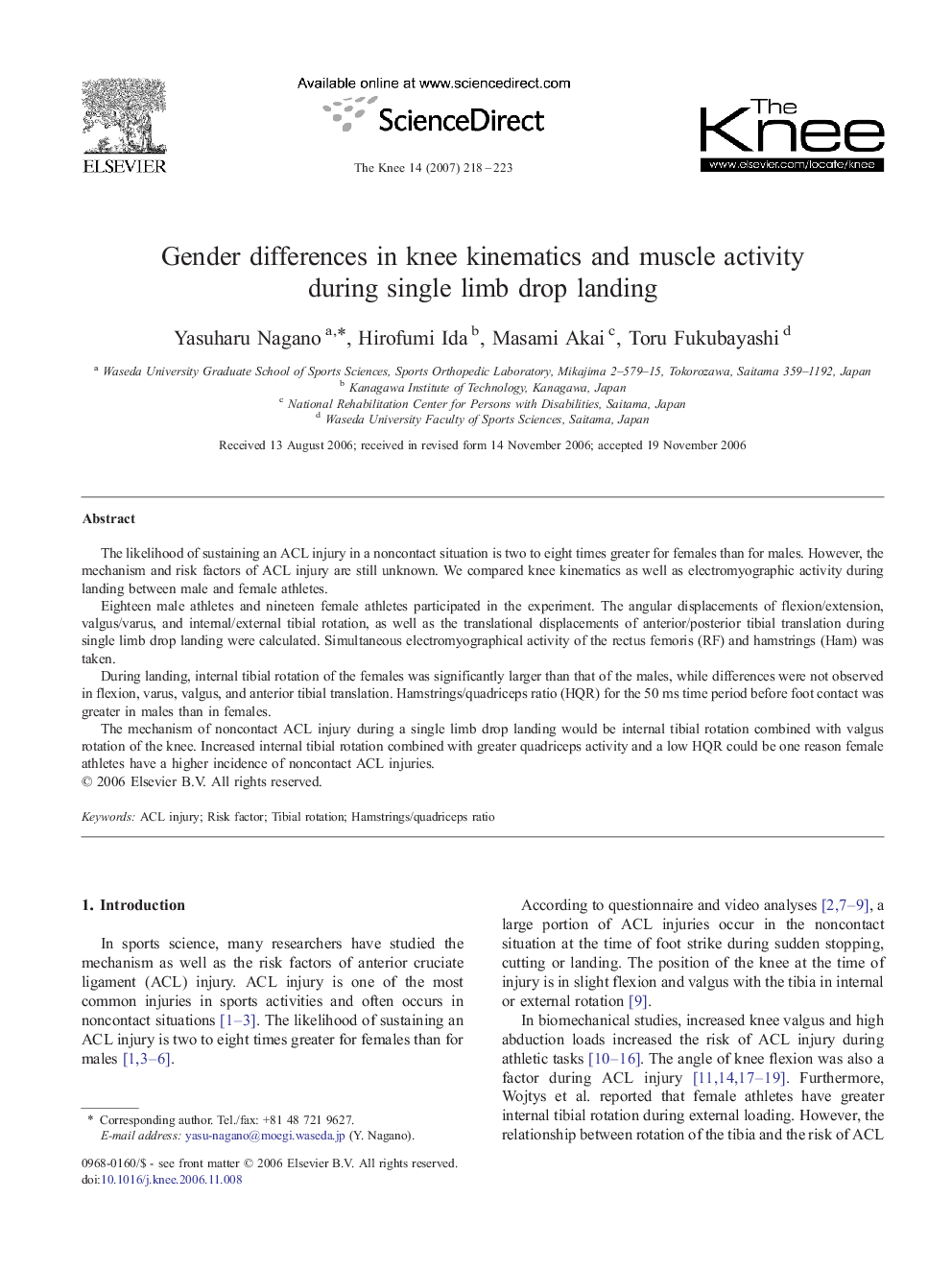| Article ID | Journal | Published Year | Pages | File Type |
|---|---|---|---|---|
| 4078496 | The Knee | 2007 | 6 Pages |
The likelihood of sustaining an ACL injury in a noncontact situation is two to eight times greater for females than for males. However, the mechanism and risk factors of ACL injury are still unknown. We compared knee kinematics as well as electromyographic activity during landing between male and female athletes.Eighteen male athletes and nineteen female athletes participated in the experiment. The angular displacements of flexion/extension, valgus/varus, and internal/external tibial rotation, as well as the translational displacements of anterior/posterior tibial translation during single limb drop landing were calculated. Simultaneous electromyographical activity of the rectus femoris (RF) and hamstrings (Ham) was taken.During landing, internal tibial rotation of the females was significantly larger than that of the males, while differences were not observed in flexion, varus, valgus, and anterior tibial translation. Hamstrings/quadriceps ratio (HQR) for the 50 ms time period before foot contact was greater in males than in females.The mechanism of noncontact ACL injury during a single limb drop landing would be internal tibial rotation combined with valgus rotation of the knee. Increased internal tibial rotation combined with greater quadriceps activity and a low HQR could be one reason female athletes have a higher incidence of noncontact ACL injuries.
